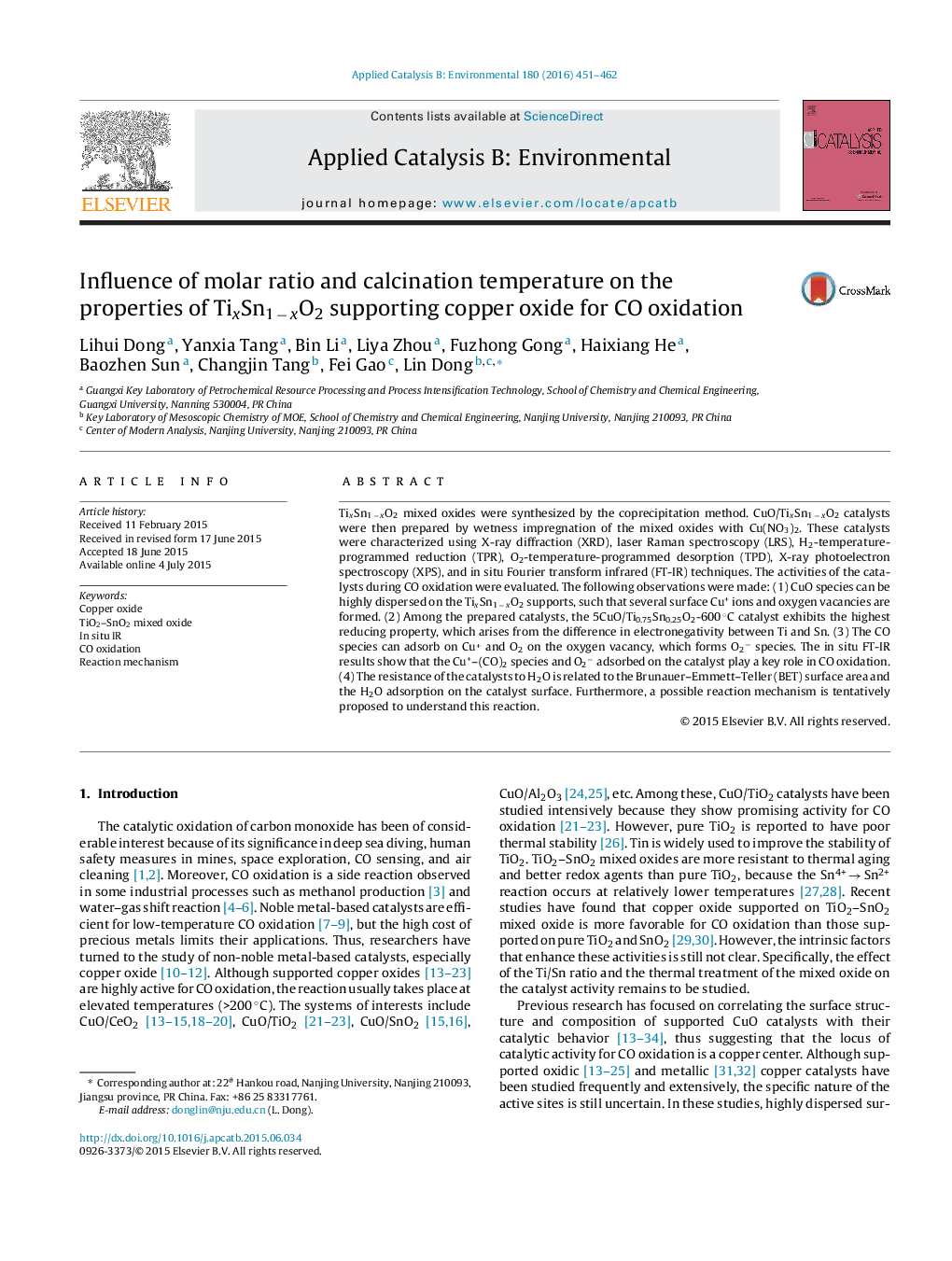| کد مقاله | کد نشریه | سال انتشار | مقاله انگلیسی | نسخه تمام متن |
|---|---|---|---|---|
| 45263 | 46407 | 2016 | 12 صفحه PDF | دانلود رایگان |

• Influence of molar ratio and calcination temperatures on CuO/TixSn1 − xO2 catalysts.
• These are a lot of Cu+ ions and oxygen vacancies exist on CuO/TixSn1 − xO2 catalysts.
• The reduce is beneficial to the formation of more surface Cu+ and oxygen vacancies.
• CO species can adsorb to form Cu+ (CO)2 and O2− is form on the oxygen vacancy.
• The resistance to H2O is related to BET area and the H2O adsorption on the catalyst.
TixSn1 − xO2 mixed oxides were synthesized by the coprecipitation method. CuO/TixSn1 − xO2 catalysts were then prepared by wetness impregnation of the mixed oxides with Cu(NO3)2. These catalysts were characterized using X-ray diffraction (XRD), laser Raman spectroscopy (LRS), H2-temperature-programmed reduction (TPR), O2-temperature-programmed desorption (TPD), X-ray photoelectron spectroscopy (XPS), and in situ Fourier transform infrared (FT-IR) techniques. The activities of the catalysts during CO oxidation were evaluated. The following observations were made: (1) CuO species can be highly dispersed on the TixSn1 − xO2 supports, such that several surface Cu+ ions and oxygen vacancies are formed. (2) Among the prepared catalysts, the 5CuO/Ti0.75Sn0.25O2-600 °C catalyst exhibits the highest reducing property, which arises from the difference in electronegativity between Ti and Sn. (3) The CO species can adsorb on Cu+ and O2 on the oxygen vacancy, which forms O2− species. The in situ FT-IR results show that the Cu+–(CO)2 species and O2− adsorbed on the catalyst play a key role in CO oxidation. (4) The resistance of the catalysts to H2O is related to the Brunauer–Emmett–Teller (BET) surface area and the H2O adsorption on the catalyst surface. Furthermore, a possible reaction mechanism is tentatively proposed to understand this reaction.
Figure optionsDownload as PowerPoint slide
Journal: Applied Catalysis B: Environmental - Volume 180, January 2016, Pages 451–462